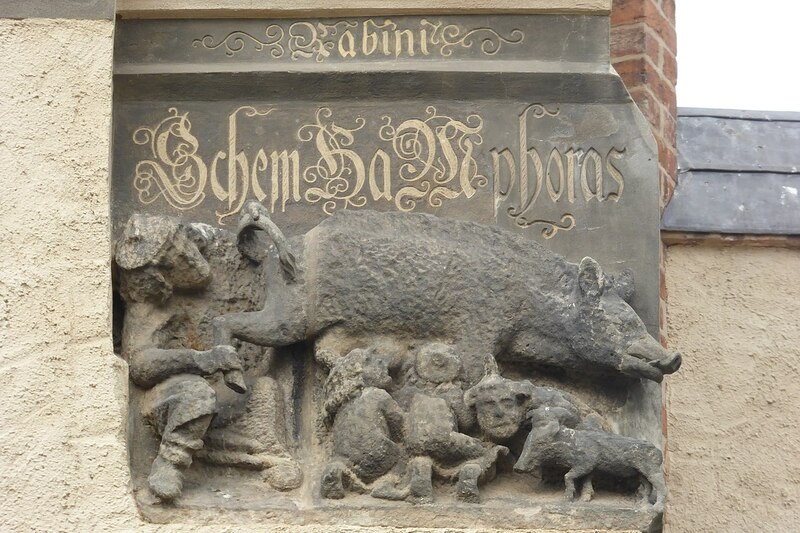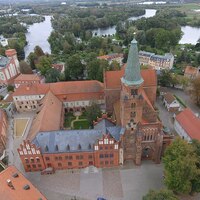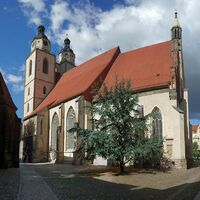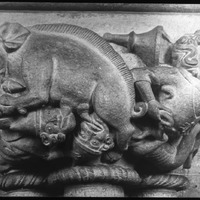Judensau
Type:
Churches,
Sculptures
Date:
1240,
ca. 1300
Location or Findspot (Modern-Day Country):
Germany
Description:
Almost fifty so-called "Jewish Sows" are preserved in stone sculptures in German-speaking lands (the German singular is Judensau). The oldest extant example is on a capital in the cloister attached to the Brandenberg Cathedral, dated ca. 1230; in that location it was regularly seen only by the clergy. A sow with a human face and wearing the pointed hat used to identify Jews in northern European medieval art suckles several piglets (one with a human arm) while a woman feeds the sow and a large Jewish man collects its droppings. Such human-beast hybrids were very common in contemporary manuscript marginalia, but they do not appear in the later versions of this subject.
Perhaps the most famous Jewish Sow, carved ca. 1300, is still prominent on the south facade of the church at Wittenberg. A Jewish man examines the sow's rear while smaller, hat-wearing Jews are suckled alongside piglets. It was in this church that Martin Luther (1483–1546) preached about reforming the Roman Church and encouraged the Protestant movement. Luther referred specifically to this sculpture in his writing, and in 1570 the image was augmented by an inscription paraphrasing Luther's words. The words “Rabini Schem hamphoras,” which is nonsensical, were meant to mock the Jews' reverence for the unspeakable name of God (shem ha-meforasch in Hebrew).
Such images mocked and dehumanized contemporary Jews—who avoided pigs—and they became more widely known through the medium of printing. These disturbing sculptures, especially the ones that are publicly visible on churches, have been the subject of lawsuits in recent years.
Perhaps the most famous Jewish Sow, carved ca. 1300, is still prominent on the south facade of the church at Wittenberg. A Jewish man examines the sow's rear while smaller, hat-wearing Jews are suckled alongside piglets. It was in this church that Martin Luther (1483–1546) preached about reforming the Roman Church and encouraged the Protestant movement. Luther referred specifically to this sculpture in his writing, and in 1570 the image was augmented by an inscription paraphrasing Luther's words. The words “Rabini Schem hamphoras,” which is nonsensical, were meant to mock the Jews' reverence for the unspeakable name of God (shem ha-meforasch in Hebrew).
Such images mocked and dehumanized contemporary Jews—who avoided pigs—and they became more widely known through the medium of printing. These disturbing sculptures, especially the ones that are publicly visible on churches, have been the subject of lawsuits in recent years.
Relevant Textbook Chapter(s):
8,
9,
11
Image Credits:
Wikimedia Commons






